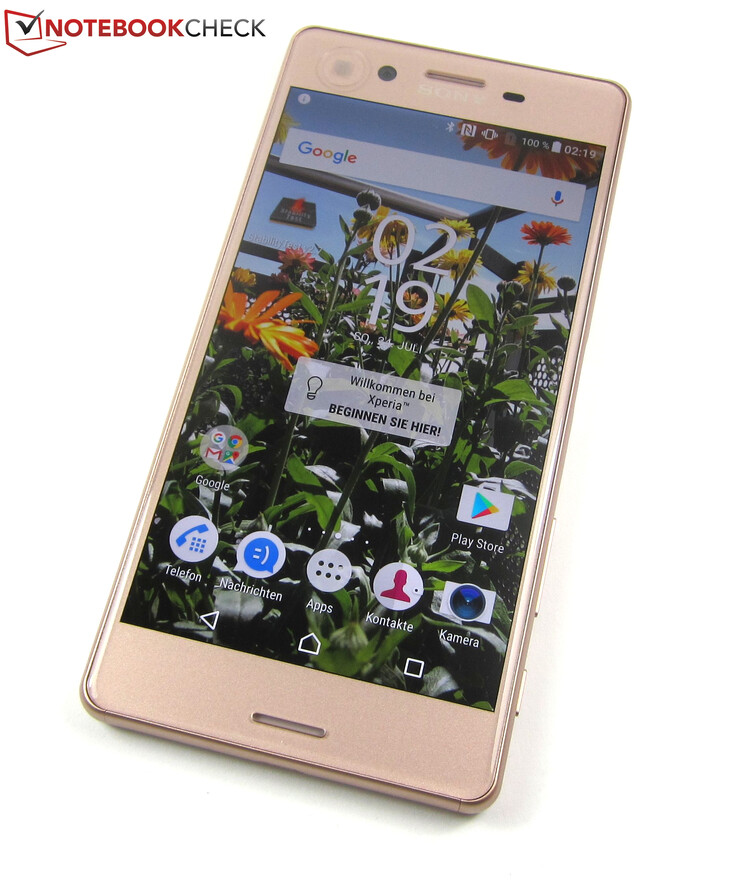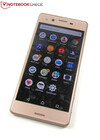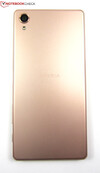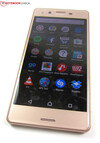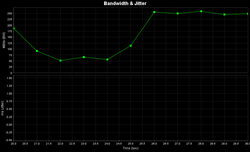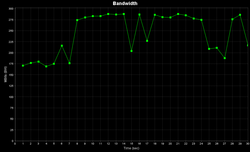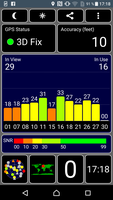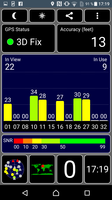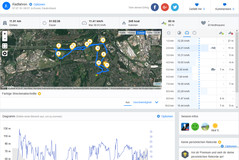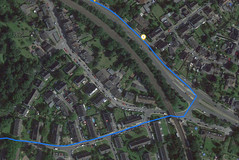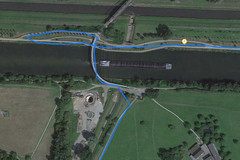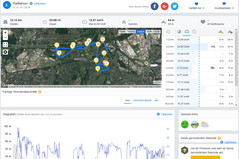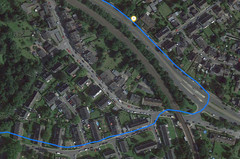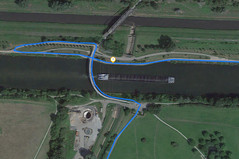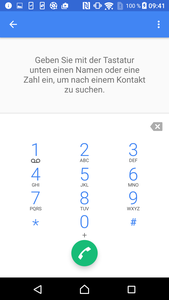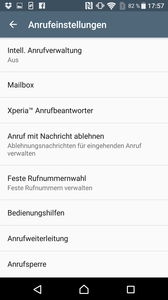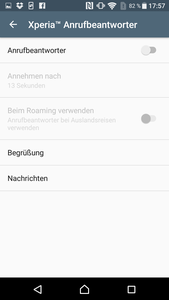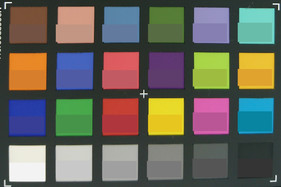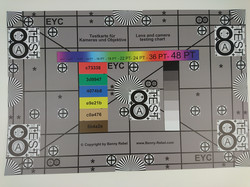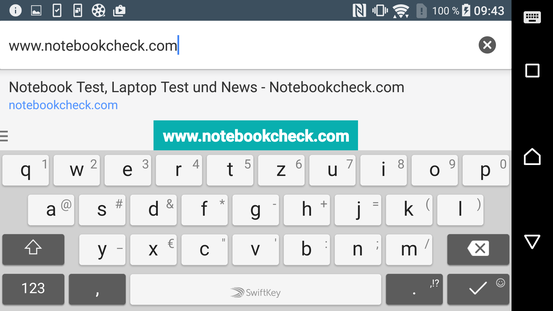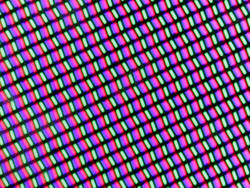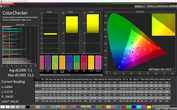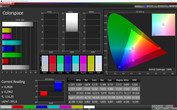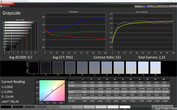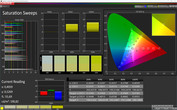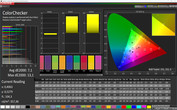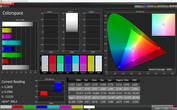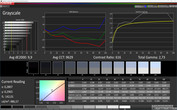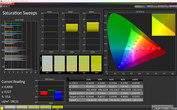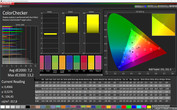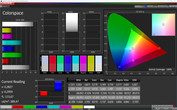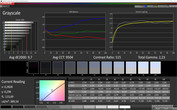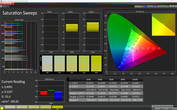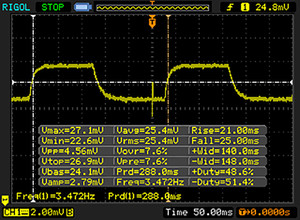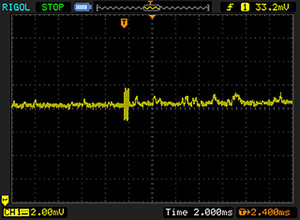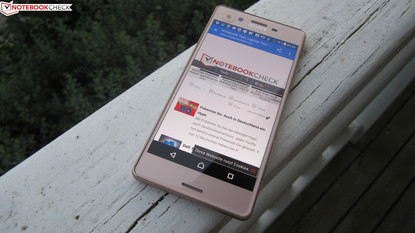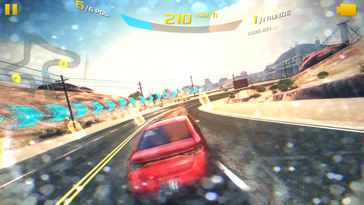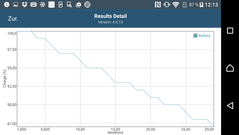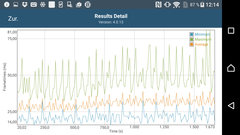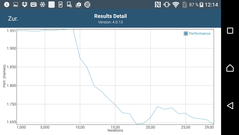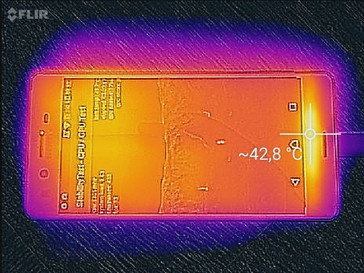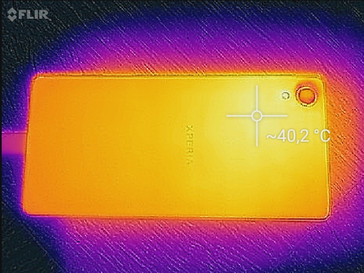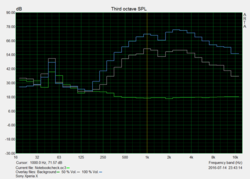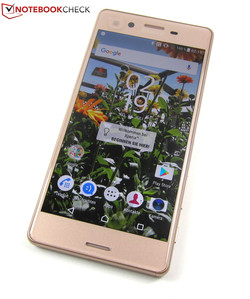Sony Xperia X Smartphone Review

For the original German review, see here.
Contrary to expectation, Sony did not introduce the successor of the Xperia Z5 at the Mobile World Congress 2016, but rather, replaced their flagship with the X series. Now, the Xperia X competes as the new top model. With a diagonal of 5 inches, it is one of the smaller smartphones. Users will not have a hard time to adjust to a new design, since it is very similar to its direct predecessors. In effect, it looks like a smaller edition of the 5.2-inch Xperia Z5.
The 152 g (~5.4 oz) light Xperia X is powered by a Snapdragon 650 hexa core processor, which has 3 GB of RAM and 32 GB of internal storage available. In addition, Sony offers a "performance" edition of the Xperia X. While the latter is slightly heavier with 163 g (~5.7 oz), it brings higher performance thanks to a Snapdragon 820 SoC. Hence, it might be even more interesting for smartphone gamers. With an official price of 699 Euros (~$783), the Xperia X Performance is 100 Euros (~$112) more expensive than the Xperia X, which was already offered in on-line shops for 480 Euros (~$534) at the time of testing.
Sony has put a lot of effort into the cameras of the Xperia X. Apart from a primary camera with an imposing resolution of 23 MP, the webcam also boasts of a high resolution with 13 MP. In addition, the primary camera features a so-called predictive autofocus, which can follow moving objects and therefore, avoid blurring. Is it the ideal selfie smartphone? We will find out.
In our review, the Xperia X had to bear up against other premium smartphones including the Apple iPhone SE, the Google Nexus 5X, the Huawei P9, the OnePlus 3 and of course the Sony Xperia Z5.
Case
Sony has wrapped the 152 g (~5.4 oz) light and 7 mm (~0.3 in) slim Xperia X in a chassis made of aluminum and plastic, available in four colors; Lime Gold, Graphite Black, White and as in our test model, Rosé Gold. Thanks to the rounded corners and edges, the slightly curved Full HD display and the low height of 7.7 mm (~0.31 in), the smartphone sits well in the hand, but has lost some quality compared to its Xperia Z5 predecessor. Furthermore, the plastic border and the visible and noticeable gaps between the glass and the frame are not quite perfect. The smooth metal back with the engraved Xperia logo in its center feels significantly higher-quality to the touch. The power button doubles as a fingerprint sensor and can, therefore be used for fast and secure unlocking of the smartphone. In addition, there is a camera button on the right side, which launches the camera app and releases the shutter.
Connectivity
The Sony Xperia X uses a Qualcomm Snapdragon 650 MSM8956 as the central processing unit. The ARM based mid-range SoC features six CPU cores, two fast Cortex A72 cores (1.8 GHz) and four frugal Cortex A53 cores (1.2 GHz). The SoC is supported by its integrated Qualcomm Adreno 510 GPU, a generous 3 GB of RAM and 32 GB of nominal storage capacity, of which the operating system (Google Android 6.0) occupies about 12 GB. Thus, about 20 GB is free out-of-the-box or after recovering factory settings.
In theory, you could insert SDXC cards with up to 2 TB into the MicroSD slot. However, memory cards higher than 256 GB are not yet available in stores. The smartphone is capable of App2SD. In addition, it can move photos, videos, and music files from the internal storage to the MicroSD card in order to free up space on the former.
The micro USB 2.0 port does not support USB-OTG or MHL. On the other hand, the smartphone can connect via NFC and Bluetooth 4.2 and supports Wi-Fi Direct. Furthermore, a fingerprint reader and an FM radio are on board. The latter can be used with the included headphones, which doubles as an antenna.
| SD Card Reader | |
| maximum SDCardreader Maximum Transfer Rate | |
| average SDCardreader Average Transfer Rate |
Software
The Xperia X runs the latest Android V6.0 Marshmallow. Sony has pre-installed the usual apps, including Google apps, the malware protection AVG Protection Pro, an FM radio, Spotify, and the music recognition tool TrackID. Overall, the software covers all the important fields without appearing overloaded. However, it is not possible to uninstall the pre-installed apps.
Communication & GPS
Apart from GSM and UMTS connections, the Xperia X supports LTE (Cat.6). Provided you have a compatible nano SIM card with a suitable rate, this makes maximum transfer rates of 300 MBit/s download and 50 MBit/s upload possible. Thereby, the smartphone provides a wide LTE frequency range with a total of 17 bands, which allows a very flexible use.
The integrated Wi-Fi module with the 802.11-a/b/g/n/ac support covers the 2.4 GHz and the 5 GHz band. The average transfer rates to our reference router (Linksys EA8500) from a distance of 1 meter (~3 ft) are very good with 244 MBit/s (sending) and satisfactory with 205 MBit/s (receiving) in the 5 GHz band. Overall, the Xperia X is on par with the Huawei P9 in terms of Wi-Fi transfer rates. The OnePlus 3 is faster than both of them with transfer rates of up to 286 MBit/s in a Wi-Fi network.
| Networking | |
| iperf Server (receive) TCP 1 m | |
| OnePlus 3 | |
| Huawei P9 | |
| Sony Xperia X | |
| iperf Client (transmit) TCP 1 m | |
| OnePlus 3 | |
| Sony Xperia X | |
| Huawei P9 | |
The Xperia X determines its current position with GPS and GLONASS. This worked with a precision of a few meters in buildings and outdoors in our test. We checked whether the precision is also that high in everyday use with our 12 km (~7.4 mi) bicycle route. The Xperia X performs well compared to the professional Garmin Edge 500 navigation device, even though there are sometimes slight deviations from the route. However, this is complaining at a high level: The position fix is definitely precise enough for everyday app use.
Phone & Voice Quality
As usual for Android, the phone app can be used intuitively and provides all the important functions. Apart from a large keypad, it features a contact list including favorites, a call log, and an answering machine. The voice quality was flawless during calls from the smartphone to fixed-line or other cellular networks. In addition, it convinces during hands-free communication via the speakers, which also worked trouble-free in our test.
Cameras
Not only are the camera specifications of the Xperia X impressive on paper, but also quite impressive in practice. Let us start from the beginning: The primary camera features a resolution of 23 MP and takes images with up to 5220x4140 pixels in 4:3 format. In 16:9 format (5984x3366 pixel), the resolution decreases to "only" 20 MP. As with the primary camera, the 13 MP webcam (4160x3120 pixels) can record videos in up to 1080p resolution (main camera: up to 60 fps, webcam: 30 fps) and is supported by optical video stabilization. The Xperia does not take 4K shots, but on the other hand, it comes with a LED flash. There is even a dedicated camera button on the right side of the case, which does not only launch the camera app, but also releases the shutter.
The 23 MP main camera features a 1/2.3" Exmor RS sensor with 24 mm wide-angle lens. Thanks to its predictive autofocus, it can track moving objects in order to prevent blurring. In order to focus on a certain region, you simply need to touch the corresponding spot on the display. This almost always worked well in the test. Only occasionally, the camera acted arbitrarily. For example, it occasionally increased the focus window of its own accord. The 13 MP webcam is more than sufficient for selfies, but it cannot keep up with the main camera in terms of image quality. Nevertheless, the capabilities of the webcam are more than sufficient for everyday tasks.
At a first glance, the Xperia X produces good quality images in daylight. At a closer look, image details such as edges and color transitions appear slightly fringed due to relatively heavy in-camera sharpening. The Samsung Galaxy S7 Edge and the OnePlus 3 perform significantly better in this respect. The fact that the Xperia X lacks an optical image stabilizer for photo shots becomes apparent when taking close-up photos as blur is slightly more evident here. Overall, the camera performance is remarkable, but not as outstanding as claimed by the manufacturer.
In addition to our test snapshots, we checked sharpness and colors under defined test conditions. In order to do this, we take as format-filling pictures as possible of the ColorChecker Passport and our test chart without post-processing them. The Xperia X makes colors slightly too bright, but this is not an essential flaw. Due to heavy in-camera sharpening, lines and edges appear slightly fringed in some places, but the image sharpness is good overall. The sharpness decreases slightly towards the edges, but very good system cameras also exhibit this effect.
Accessories & Warranty
The Xperia X comes with a USB cable, a modular power adapter, headphones, and a quick start guide. Sony offers several accessories for its smartphone in their online shop, including various covers, in-ear headphones, a Bluetooth headset, and a docking station. The Xperia X comes with a 24-months warranty.
Input Devices & Handling
The Full HD touchscreen of the Xperia X responds very precisely to inputs of up to the edges and fingers glide easily on the smooth surface. Up to 10 commands are recognized simultaneously. Thanks to a special mode that can be enabled, this also works with gloves. The fingerprint sensor hidden in the power button works fast and reliably. Up to five fingerprints can be stored. As recommended, the user should only gently touch the power button when scanning a fingerprint, since otherwise the screen lock becomes activated. It is convenient that not only you can unlock the smartphone via fingerprint, but also authorize purchase and app access.
The simple virtual QWERTZ keyboard uses Google's personalized word suggestions. In addition, the keyboard can be configured in detail. For example, you can change the layout, specify the keyboard size and choose whether a number row is displayed.
Display
The 5-inch LCD of the Xperia X features a resolution of 1920x1080 pixels and delivers a slightly higher pixel density than its Xperia Z5 predecessor (441 PPI vs. 424 PPI). With an average of 392 cd/m², it is more than bright enough for all kinds of smartphone use. In addition, it is supported by a brightness sensor, which automatically adjusts the display brightness to the ambient light. However, display characteristics such as the high black value of 0.68 cd/m² and the modest contrast ratio of 594:1 are not entirely pleasing. The predecessor performs significantly better in both aspects.
| |||||||||||||||||||||||||
Brightness Distribution: 91 %
Center on Battery: 404 cd/m²
Contrast: 594:1 (Black: 0.68 cd/m²)
ΔE Color 7.1 | 0.5-29.43 Ø5
ΔE Greyscale 9.7 | 0.57-98 Ø5.3
Gamma: 2.23
| Sony Xperia X LCD, 1920x1080, 5.00 | Huawei P9 IPS-NEO, JDI, 1920x1080, 5.20 | Sony Xperia Z5 IPS, 1920x1080, 5.20 | Google Nexus 5X IPS, 1920x1080, 5.20 | Apple iPhone SE IPS, 1136x640, 4.00 | OnePlus 3 Optic-AMOLED, 1920x1080, 5.50 | |
|---|---|---|---|---|---|---|
| Screen | 53% | 23% | 54% | 39% | 21% | |
| Brightness middle | 404 | 582 44% | 669 66% | 503 25% | 603 49% | 419 4% |
| Brightness | 392 | 563 44% | 624 59% | 498 27% | 579 48% | 431 10% |
| Brightness Distribution | 91 | 91 0% | 85 -7% | 97 7% | 93 2% | 84 -8% |
| Black Level * | 0.68 | 0.38 44% | 0.68 -0% | 0.38 44% | 0.88 -29% | |
| Contrast | 594 | 1532 158% | 984 66% | 1324 123% | 685 15% | |
| Colorchecker dE 2000 * | 7.1 | 4.4 38% | 7.96 -12% | 2.09 71% | 1.8 75% | 4.1 42% |
| Colorchecker dE 2000 max. * | 13.2 | 7.4 44% | 3.5 73% | 12 9% | ||
| Greyscale dE 2000 * | 9.7 | 4.8 51% | 10.95 -13% | 2.12 78% | 2.3 76% | 3.3 66% |
| Gamma | 2.23 99% | 2.2 100% | 2.61 84% | 2.27 97% | 2.21 100% | 2.1 105% |
| CCT | 9502 68% | 6175 105% | 7402 88% | 6621 98% | 6955 93% | 6550 99% |
| Color Space (Percent of AdobeRGB 1998) | 77.78 | 62.13 | 89.38 | |||
| Color Space (Percent of sRGB) | 99.44 | 96.74 | 100 |
* ... smaller is better
Subjectively, despite the not entirely perfect image characteristics, the Xperia X produces crisp colors. Both are possible since the smartphone applies a trick. With "X-Reality", it uses one of a total of the three image optimization modes by default, which increases the saturation in photos and videos. The "Super-Vivid" mode adjusts colors even more, while a simple "off" switches image optimization completely off.
When you scrutinize the display with the X-Rite i1Pro 2 colorimeter and the CalMAN software, it becomes apparent that images are very flashy with the disabled image mode. The color temperature is always too high. Thus images appear slightly too "warm". Color and grayscale precision also leave much to be desired, which manifests in too high DeltaE values. However, the colorful image is not really disturbing. In contrast, it is quite suitable for what the Xperia X aims to be - a photo and selfie smartphone.
Display Response Times
| ↔ Response Time Black to White | ||
|---|---|---|
| 46 ms ... rise ↗ and fall ↘ combined | ↗ 21 ms rise | |
| ↘ 25 ms fall | ||
| The screen shows slow response rates in our tests and will be unsatisfactory for gamers. In comparison, all tested devices range from 0.1 (minimum) to 240 (maximum) ms. » 99 % of all devices are better. This means that the measured response time is worse than the average of all tested devices (21.5 ms). | ||
| ↔ Response Time 50% Grey to 80% Grey | ||
| 65 ms ... rise ↗ and fall ↘ combined | ↗ 38 ms rise | |
| ↘ 27 ms fall | ||
| The screen shows slow response rates in our tests and will be unsatisfactory for gamers. In comparison, all tested devices range from 0.2 (minimum) to 636 (maximum) ms. » 97 % of all devices are better. This means that the measured response time is worse than the average of all tested devices (33.7 ms). | ||
Screen Flickering / PWM (Pulse-Width Modulation)
| Screen flickering / PWM not detected | |||
In comparison: 53 % of all tested devices do not use PWM to dim the display. If PWM was detected, an average of 17924 (minimum: 5 - maximum: 3846000) Hz was measured. | |||
The LCD of the Xperia X appeals with a high viewing angle stability. While the display content in particular appears slightly darker in flat angles, the legibility remains unchanged and high. The smartphone also deserves a good rating in outdoor use. The display is more than sufficiently bright for outdoor use. Only its glossy surface is troublesome here.
Performance
Together with the integrated Qualcomm Adreno 510 graphic chip and 3 GB of RAM, the Qualcomm Snapdragon 650 MSM8956 hexa-core processor ensures fast operation under Android 6.0. When you compare the Xperia X with similarly equipped smartphones, it is, for example, on par with its Xperia Z5 predecessor and the Google Nexus 5X. However, none of these smartphones can keep up with the best three, the Huawei P9, the Apple iPhone SE, and the OnePlus 3, in the synthetic benchmarks and browser tests.
The Xperia X uses a conventional flash memory and is therefore a solid mid-range in terms of read and write performance. Data transfers are neither particularly fast nor especially slow, but slightly faster than its closest pursuers, the Xperia Z5 and the Google Nexus 5X. However, the Xperia X cannot boast in terms of read and write performance of micro SD cards. With a data throughput of 17.7 MB/s, the smartphone is nowhere near exploiting the full potential of the micro SD reference card Toshiba Exceria Pro M401 (read: up to 95 MB/s, write: up to 80 MB/s).
| AnTuTu v6 - Total Score (sort by value) | |
| Sony Xperia X | |
| Huawei P9 | |
| Apple iPhone SE | |
| OnePlus 3 | |
| Geekbench 3 | |
| 64 Bit Single-Core Score (sort by value) | |
| Sony Xperia X | |
| Huawei P9 | |
| Sony Xperia Z5 | |
| Google Nexus 5X | |
| Apple iPhone SE | |
| OnePlus 3 | |
| 64 Bit Multi-Core Score (sort by value) | |
| Sony Xperia X | |
| Huawei P9 | |
| Sony Xperia Z5 | |
| Google Nexus 5X | |
| Apple iPhone SE | |
| OnePlus 3 | |
| 3DMark | |
| 1280x720 offscreen Ice Storm Unlimited Score (sort by value) | |
| Sony Xperia X | |
| Huawei P9 | |
| Sony Xperia Z5 | |
| Google Nexus 5X | |
| Apple iPhone SE | |
| OnePlus 3 | |
| 1280x720 offscreen Ice Storm Unlimited Graphics Score (sort by value) | |
| Sony Xperia X | |
| Huawei P9 | |
| Sony Xperia Z5 | |
| Google Nexus 5X | |
| Apple iPhone SE | |
| OnePlus 3 | |
| 1280x720 offscreen Ice Storm Unlimited Physics (sort by value) | |
| Sony Xperia X | |
| Huawei P9 | |
| Sony Xperia Z5 | |
| Google Nexus 5X | |
| Apple iPhone SE | |
| OnePlus 3 | |
| 2560x1440 Sling Shot OpenGL ES 3.0 Unlimited (sort by value) | |
| Sony Xperia X | |
| OnePlus 3 | |
| 2560x1440 Sling Shot OpenGL ES 3.0 Unlimited Graphics (sort by value) | |
| Sony Xperia X | |
| OnePlus 3 | |
| 2560x1440 Sling Shot OpenGL ES 3.0 Unlimited Physics (sort by value) | |
| Sony Xperia X | |
| OnePlus 3 | |
| GFXBench (DX / GLBenchmark) 2.7 | |
| T-Rex Onscreen (sort by value) | |
| Sony Xperia X | |
| Huawei P9 | |
| Sony Xperia Z5 | |
| Google Nexus 5X | |
| Apple iPhone SE | |
| OnePlus 3 | |
| 1920x1080 T-Rex Offscreen (sort by value) | |
| Sony Xperia X | |
| Huawei P9 | |
| Sony Xperia Z5 | |
| Google Nexus 5X | |
| Apple iPhone SE | |
| OnePlus 3 | |
| GFXBench 3.0 | |
| on screen Manhattan Onscreen OGL (sort by value) | |
| Sony Xperia X | |
| Huawei P9 | |
| Sony Xperia Z5 | |
| Google Nexus 5X | |
| Apple iPhone SE | |
| OnePlus 3 | |
| 1920x1080 1080p Manhattan Offscreen (sort by value) | |
| Sony Xperia X | |
| Huawei P9 | |
| Sony Xperia Z5 | |
| Google Nexus 5X | |
| Apple iPhone SE | |
| OnePlus 3 | |
| GFXBench 3.1 | |
| on screen Manhattan ES 3.1 Onscreen (sort by value) | |
| Sony Xperia X | |
| Huawei P9 | |
| Sony Xperia Z5 | |
| Apple iPhone SE | |
| OnePlus 3 | |
| 1920x1080 Manhattan ES 3.1 Offscreen (sort by value) | |
| Sony Xperia X | |
| Huawei P9 | |
| Sony Xperia Z5 | |
| Apple iPhone SE | |
| OnePlus 3 | |
| PCMark for Android - Work performance score (sort by value) | |
| Sony Xperia X | |
| Huawei P9 | |
| Sony Xperia Z5 | |
| Google Nexus 5X | |
| OnePlus 3 | |
| Octane V2 - Total Score (sort by value) | |
| Sony Xperia X | |
| Huawei P9 | |
| Sony Xperia Z5 | |
| Google Nexus 5X | |
| Apple iPhone SE | |
| OnePlus 3 | |
| Mozilla Kraken 1.1 - Total (sort by value) | |
| Sony Xperia X | |
| Huawei P9 | |
| Sony Xperia Z5 | |
| Google Nexus 5X | |
| Apple iPhone SE | |
| OnePlus 3 | |
| JetStream 1.1 - Total Score (sort by value) | |
| Sony Xperia X | |
| Huawei P9 | |
| Sony Xperia Z5 | |
| Google Nexus 5X | |
| Apple iPhone SE | |
| OnePlus 3 | |
| AndroBench 3-5 | |
| Sequential Read 256KB (sort by value) | |
| Sony Xperia X | |
| Huawei P9 | |
| Sony Xperia Z5 | |
| Google Nexus 5X | |
| OnePlus 3 | |
| Sequential Write 256KB (sort by value) | |
| Sony Xperia X | |
| Huawei P9 | |
| Sony Xperia Z5 | |
| Google Nexus 5X | |
| OnePlus 3 | |
| Random Read 4KB (sort by value) | |
| Sony Xperia X | |
| Huawei P9 | |
| Sony Xperia Z5 | |
| Google Nexus 5X | |
| OnePlus 3 | |
| Random Write 4KB (sort by value) | |
| Sony Xperia X | |
| Huawei P9 | |
| Sony Xperia Z5 | |
| Google Nexus 5X | |
| OnePlus 3 | |
| Sequential Read 256KB SDCard (sort by value) | |
| Sony Xperia X | |
| Huawei P9 | |
| Sequential Write 256KB SDCard (sort by value) | |
| Sony Xperia X | |
| Huawei P9 | |
* ... smaller is better
Games
Even if Sony does not like to hear this: The Xperia X with its Qualcomm combination from Snapdragon 650 MSM8956 and Adreno-510 GPU is rather mid-range than premium in terms of smartphone performance. However, this does not reduce gaming fun: The Xperia X can also run graphically demanding games such as “Asphalt 8: Airborne” or “Dead Trigger 2” smoothly. In the latter, the smartphone even achieves a fast 50 fps with high detail level. Just as expected by gamers, the smartphone sensors and the touchscreen immediately react to inputs.
| Asphalt 8: Airborne | |||
| Settings | Value | ||
| high | 30 fps | ||
| Dead Trigger 2 | |||
| Settings | Value | ||
| high | 60 fps | ||
Emissions
Temperature
With a maximum of 40.3 degrees Celsius (~105 degrees Fahrenheit) under full load, the temperature increase of the Xperia X is absolutely fine. The phone still feels slightly too warm after prolonged use, since it only has a few cool spots due to a quite consistent temperature increase. However, this is significantly less serious than the heavy throttling. The smartphone gets too warm after 9 runs of the battery test from GFXBench. As a consequence, the SoC throttles and the performance falls significantly. The performance loss continues until the test ends (30 runs).
(±) The maximum temperature on the upper side is 40.3 °C / 105 F, compared to the average of 35 °C / 95 F, ranging from 21.9 to 56 °C for the class Smartphone.
(+) The bottom heats up to a maximum of 38.5 °C / 101 F, compared to the average of 33.8 °C / 93 F
(±) In idle usage, the average temperature for the upper side is 35.1 °C / 95 F, compared to the device average of 32.7 °C / 91 F.
Speakers
The up to 82.9 dB(A) loud stereo speakers of the Xperia X generate a powerful sound and do not even distort at maximum volume. As the pink noise diagram shows, the frequencies are not rendered in a particularly linear way. Bass is hardly audible. Apart from this, the sound is surprisingly clear. In addition, there are extra functionality such as an equalizer, dynamic normalization, surround sound effects for headphones and speakers, the sound enhancer DSEE HX, and Clear Audio + for the frequency balance.
Frequency diagram in comparison (checkboxes at the top are checkable/uncheckable!)
Value 1: Pink Noise 100% Vol.; Value 2: Audio off
Energy Management
Power Consumption
With a maximum power consumption of 1.75 watts when running idle, the Xperia X is pleasingly frugal. Under high load, the smartphone requires up to 7 watts, which is still moderate. The Xperia X supports Qualcomm's QuickCharge functionality, but only when combined with a compatible power adapter such as the optionally offered quick charging device UCH12. With the included power adapter, it takes about 3 hours for a full charge from empty.
| Off / Standby | |
| Idle | |
| Load |
|
Battery Life
If you take the Xperia Z5 predecessor as reference, not only the battery life of the Xperia X is not better, but slightly worse. However, apart from in the idle benchmark, the differences are not big. In addition, the battery runtimes of the Xperia X are really nothing to sneeze at. 7:14 hours in the realistic Wi-Fi test is as good a value as 3:33 hours under full load. However, the Xperia cannot quite measure up to the competitors. The OnePlus 3 is the unrivalled leader with the longest stamina by far.
| Sony Xperia X 2620 mAh | Huawei P9 3000 mAh | Sony Xperia Z5 mAh | Google Nexus 5X mAh | Apple iPhone SE 1624 mAh | OnePlus 3 3000 mAh | |
|---|---|---|---|---|---|---|
| Battery Runtime | 15% | 13% | 15% | 26% | 48% | |
| Reader / Idle | 1240 | 1514 22% | 1669 35% | 1775 43% | 1274 3% | 1338 8% |
| H.264 | 518 | 568 10% | 600 16% | 555 7% | 759 47% | 847 64% |
| WiFi v1.3 | 434 | 569 31% | 438 1% | 412 -5% | 673 55% | 840 94% |
| Load | 213 | 206 -3% | 213 0% | 245 15% | 207 -3% | 268 26% |
Pros
Cons
Verdict
The Sony Xperia X does a lot of things right, but cannot entirely live up to its self-imposed claim of being a top smartphone. Nevertheless, there are many arguments in favor of the 5-inch Android phone. It features an elegant case made of aluminum and plastic, which also feels premium to the touch, even though the chassis cannot keep up fully with its Xperia Z5 predecessor. On the other hand, the phone comes with a bright and viewing-angle-stable Full HD display, a fingerprint sensor, the latest Android 6.0, 20 GB of free storage space, good communication features, and the fast Qualcomm Snapdragon 650 MSM8956 as its nerve center. Many prospective buyers might be surprised that is only a mid-range SoC despite the upper-class price. Our test model costs 480 Euros (~$534). This is slightly too much. Finally, the Xperia X does not differ that much from the Xperia Z5, which is much cheaper now.
The Sony Xperia X is a rock-solid, yet quite expensive smartphone, which can, unlike its high-end Xperia Z5 predecessor, only be considered as a mid-range model.
The two cameras with 23 MP and 13 MP are the main selling point. Both have a fast shutter release, can record 1080p videos (main camera: at 60 fps), and deliver above average image quality. In addition, there are useful features such as the predictive autofocus, which improves the sharpness when recording moving objects. Nevertheless, the performance is not good enough for top photographing, since the odd flaw becomes visible at a closer look. All things considered, the Sony Xperia X is a rock-solid smartphone - no less, but unfortunately also no more than that.
Sony Xperia X
-
07/28/2016 v5.1(old)
Manuel Masiero


 Deutsch
Deutsch English
English Español
Español Français
Français Italiano
Italiano Nederlands
Nederlands Polski
Polski Português
Português Русский
Русский Türkçe
Türkçe Svenska
Svenska Chinese
Chinese Magyar
Magyar